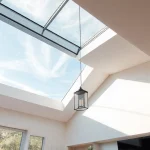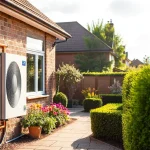Understanding the Importance of a Pet-Friendly Garden
Incorporating pet safety into your garden design can greatly enhance your pet’s health and happiness. A pet-friendly landscaping approach not only provides a safe environment for your furry friends but also encourages them to engage with the outdoors healthily. Typical gardens can harbor hazards like toxic plants, unsafe materials, and open bodies of water. Recognising these dangers is crucial for pet safety.
For instance, sharp-edged plants and thorny bushes should be avoided or managed carefully. Similarly, certain pesticides and garden chemicals can be harmful if ingested or come into contact with pets. Ensuring your garden is free from such hazards is crucial to creating a pet-friendly space.
Topic to read : Top-rated asbestos removal services in london you can rely on
Local conditions play a significant role in garden design, especially concerning pet safety. Whether you live in Nottingham or elsewhere, it’s essential to consider climate, common plant varieties, and specific animal behaviours when planning your garden. Tailoring your garden design to these local factors helps safeguard your pets and supports their wellbeing. By prioritising these elements, your garden can be transformed into a sanctuary that caters to both human and animal inhabitants alike.
Choosing Pet-Safe Plants
Designing a pet-friendly garden starts with selecting pet-safe plants. This ensures your garden is a haven rather than a hazard. Here’s how you can achieve that:
Also to see : Expert after builders cleaning services in bromley
Ideal Plants for Pets
Opting for plants like snapdragons, sunflowers, and bamboo adds vibrancy to your garden while keeping pets safe. These species are non-toxic and pose no threat if nibbled on by curious pets.
Toxic Plants to Avoid
Unfortunately, some beautiful plants can be harmful to pets. Steer clear of lilies, azaleas, and foxgloves, as these can cause serious health issues if ingested. Awareness of these toxic plants is vital for pet safety.
Local Availability of Safe Plants
Sourcing pet-safe plants locally is both practical and beneficial. Nurseries in Nottingham often have a range of options suited for local conditions. They can advise on which plants thrive best in the soil and climate, ensuring both garden aesthetics and pet safety.
Incorporating safe flora into your garden design not only protects your pets but also enriches their outdoor experience, fostering a harmonious environment that supports their wellbeing.
Fencing and Boundary Solutions
Creating secure boundaries in your garden is vital to ensuring the safety and containment of your pets. This not only prevents them from wandering into dangerous areas but also protects your garden from unwanted intrusions.
Materials for Safe Fencing
When selecting materials for garden fencing, consider options that balance safety and aesthetics. Wooden fences with smooth finishes and metal barriers crafted from rust-resistant alloys offer durability. They also prevent injuries from sharp edges, making them ideal for a pet-friendly garden design. Always choose materials that can withstand local weather conditions, ensuring longevity.
Best Practices for Garden Boundaries
An effective pet containment strategy involves planning your garden’s layout carefully. Design boundaries with pets’ abilities in mind – knowing how high they can jump or how small they can squeeze through will guide your choices. Installing self-closing gates and ensuring fence posts are secure also enhances safety.
Local Regulations on Fencing
Before installing fences in Nottingham, verify compliance with local regulations that may apply. This could include height restrictions or approved materials. Checking with local authorities can save future hassles, ensuring your fencing not only meets your pets’ needs but also adheres to community standards.
Creating Safe Landscaping Features
Incorporating safe landscaping features is essential for creating a garden that is both attractive and secure for pets. Thoughtful garden design can turn an outdoor space into a delightful haven for both you and your furry companions, nurturing a truly pet-friendly environment.
Hardscaping Considerations
When planning patios and walkways, it’s important to choose materials that aren’t slippery and offer good traction for pets. Opt for non-toxic, smooth materials to prevent injuries. Always consider how these elements integrate with the rest of your garden design, promoting both functionality and aesthetics.
Water Features and Safety
While water features add charm, they require careful planning to ensure pet safety. Choose shallow designs, or install barriers to prevent accidental slips. Ensure that any water is clean and regularly changed to avoid health risks. Safe water features can enrich pets’ outdoor experiences when designed with care.
Shade and Resting Areas
Pets need plenty of shade and comfortable spots for resting. Design covered areas using pergolas or garden umbrellas, ensuring that they are structurally sound. Incorporating these pet-friendly features allows your garden to be a refreshing oasis where pets can relax and enjoy their surroundings safely.
Activities for Pets in the Garden
Creating a garden that is both fun and engaging for your pets is a great way to enhance their overall wellbeing. Incorporating pet activities into your outdoor space ensures that your garden is not only a place of beauty but also a venue for play and exploration.
Interactive Elements
Integrate interactive elements to stimulate your pets’ natural instincts. Features like agility tunnels, pet-safe obstacle courses, and even sniffing gardens can provide endless entertainment and exercise. These additions encourage pets to engage constructively with the environment, alleviating boredom and promoting physical health.
Games and Exercises
Gardens are perfect for a multitude of games and exercises. Hide-and-seek, fetch, or even garden-based treasure hunts are excellent ways to encourage exercise. Define specific areas within the garden for each activity to keep it structured and safe.
Socializing with Other Pets
Lastly, consider setting up your garden as a space where pets can socialize. Invite friends with pets to join in playdates, ensuring all animals are comfortable while enjoying the space. Socialization not only provides exercise but also helps in behaviour training and mental stimulation, fostering a harmonious pet community.
Safety Considerations and Maintenance
Maintaining a pet-friendly garden requires consistent attention throughout the year. Garden maintenance is essential for ensuring a safe environment where pets can roam freely without encountering hazards.
Regular Garden Inspections
Routine checks are a vital part of garden maintenance, helping to identify any new hazards. Inspecting plants, fences, and lawn areas frequently allows early detection of potential risks, such as broken branches, sharp objects, or emerging toxic plants. Regular inspections help maintain a high safety standard for your garden, protecting curious pets eager to explore.
Seasonal Care Tips
Each season brings unique challenges for pet safety. As seasons change, so should your garden care strategies. In spring, check for securely installed fences and remove any emerging harmful weeds. Summer requires ensuring water features offer fresh, clean water and providing additional shade for heat protection. Autumn necessitates clearing fallen leaves that might conceal hazards, while in winter, safe pathways free from ice should be maintained.
Identifying Hazards
Identifying potential hazards is crucial for ongoing garden safety. This includes regularly reviewing garden supplies like fertilizers and tools, ensuring they are pet-safe or securely stored away. Promptly addressing these hazards reduces injuries and supports an enjoyable outdoor experience for all.
Local Insights and Resources
Creating a pet-friendly garden in Nottingham is an engaging endeavour, enriched by tapping into local resources. Various community gardening groups can provide invaluable insights and support. These groups frequently focus on promoting safe environmental practices, ensuring gardens are both beautiful and secure for pets.
Community Gardening Groups
Joining a local gardening group not only offers guidance in creating pet-friendly spaces but also opportunities to exchange tips with fellow garden enthusiasts. These groups often host workshops and events where members discuss garden design strategies that prioritise pet safety and health. Engaging with such a community can enhance your gardening experience by providing practical advice tailored to Nottingham’s unique climate and flora.
Local Regulations Affecting Gardens
Understanding local regulations is crucial for compliant garden planning. In Nottingham, specific guidelines might govern plant choices, water usage, or fencing structures. Familiarising yourself with these regulations enables you to design a garden that aligns with community standards while meeting your pets’ needs.
Resources for Pet Owners
Local resources are abundant for pet owners aiming to incorporate pet safety within their gardens. Whether seeking advice from a nursery specialising in pet-safe plants or connecting with pet care services offering garden-friendly tips, Nottingham has much to offer. These services can provide support in maintaining a safe and harmonious outdoor environment for pets.










